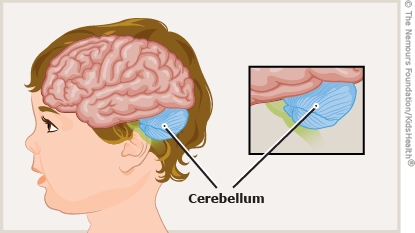Acute Cerebellar Ataxia: How to Care for Your Child
Acute cerebellar ataxia (eh-TAK-see-uh) is a problem with the cerebellum (the part of the brain that controls the movement of muscles). It usually starts after a viral infection. Most of the time, it gets better on its own in a few weeks. Here's how to care for your child during that time.


-
Support your child while they recover. It may be upsetting for them to not be able to control their movements. Remind them that the symptoms should improve soon.
-
Talk to your child's teachers and school nurse. Depending on the symptoms, your child might need extra time to get to class, help with writing and typing, or an easier workload.
-
Your child may need to change activities based on the symptoms. For example, if they have problems with balance, they may need to wait until feeling better before riding a bike.
-
If your child has trouble with walking, keep them safe by helping with things like using stairs and crossing the street.
-
Follow up as your health care provider recommends.

Your child:
-
has symptoms that get worse
-
has new symptoms such as a fever, headache, jerking of the arms or legs, or vomiting
-
still has symptoms after 3 weeks
-
gets better, but then symptoms return

Your child:
-
is confused
-
has a severe headache
-
has a seizure

What are the symptoms of acute cerebellar ataxia? Common symptoms in children include:
-
walking with the feet far apart
-
staggering or being unsteady when they walk
-
trouble talking clearly
-
jerky eye movements
-
rhythmic shaking of the hands (tremor)
What causes acute cerebellar ataxia? In children, the most common cause is a virus. Other causes include medicines, alcohol, and toxins like mercury or lead.